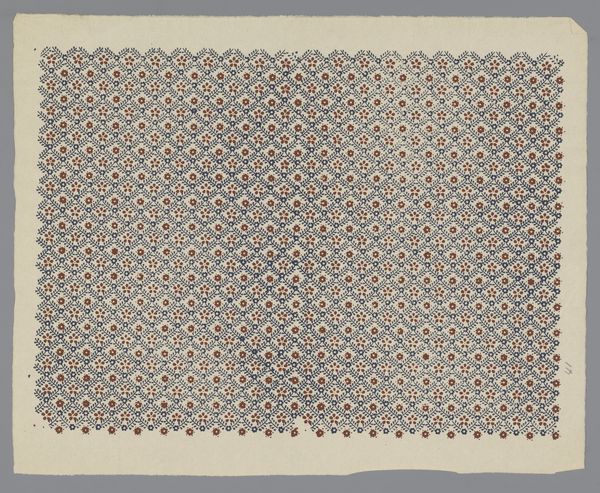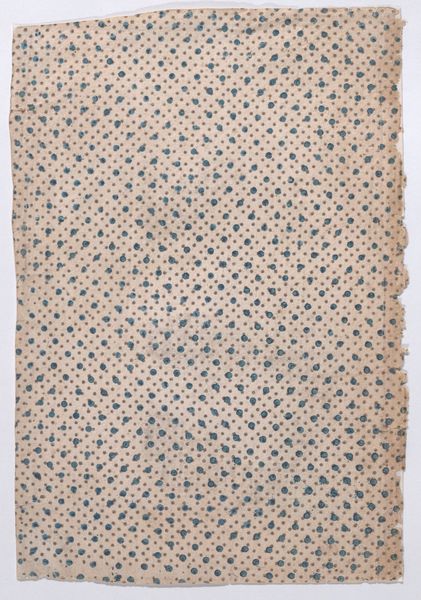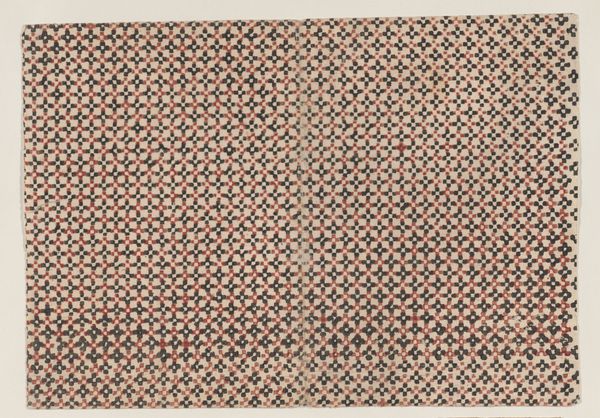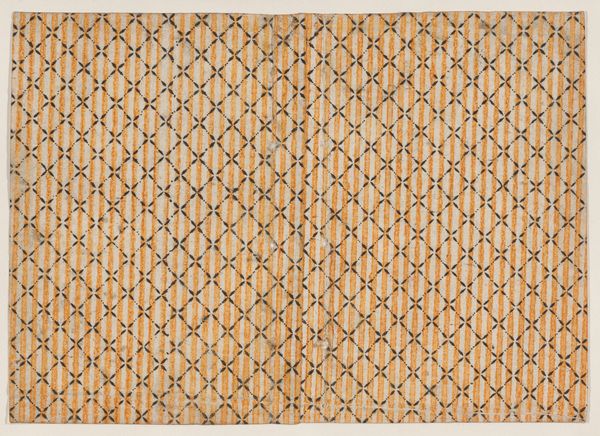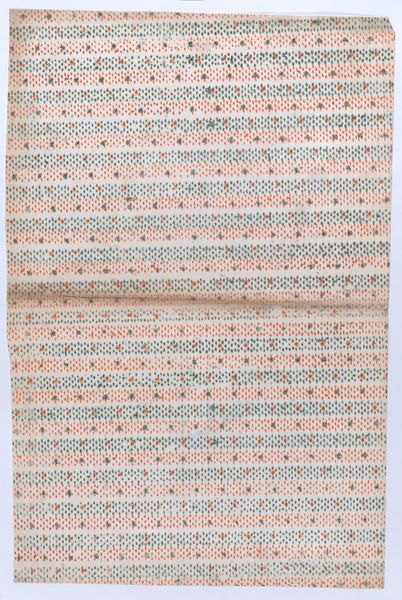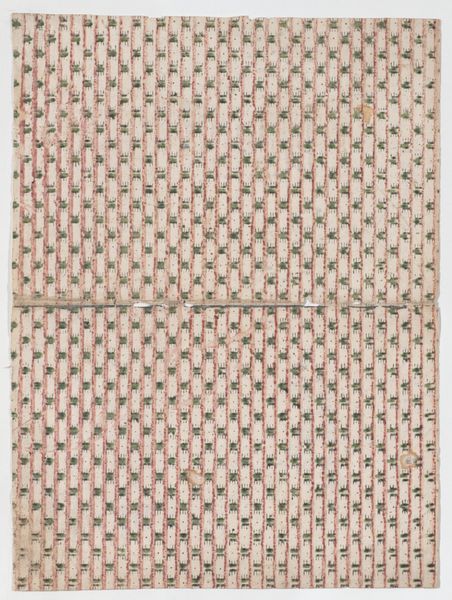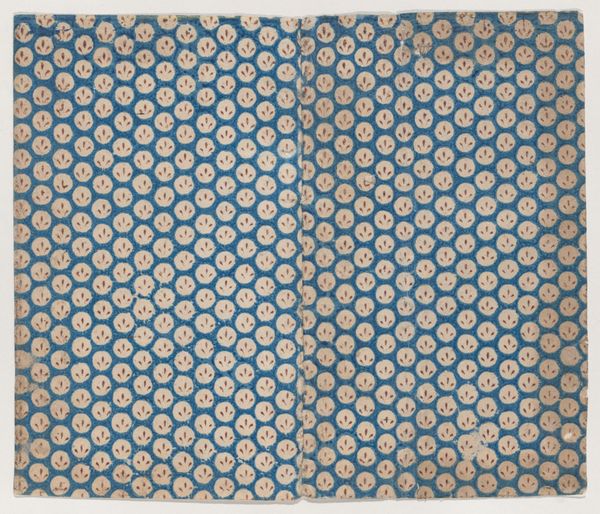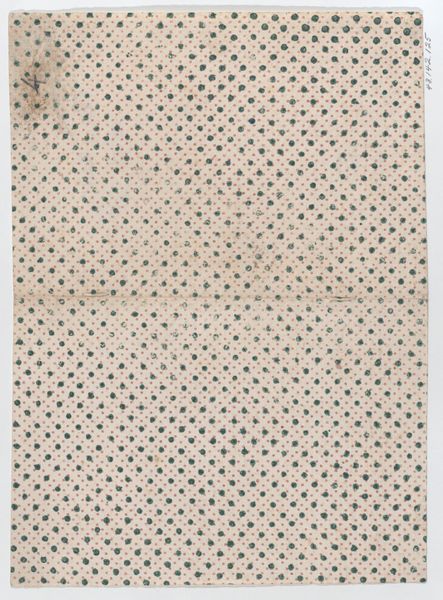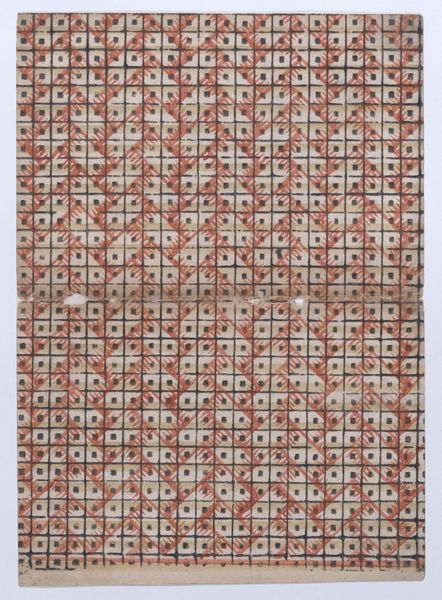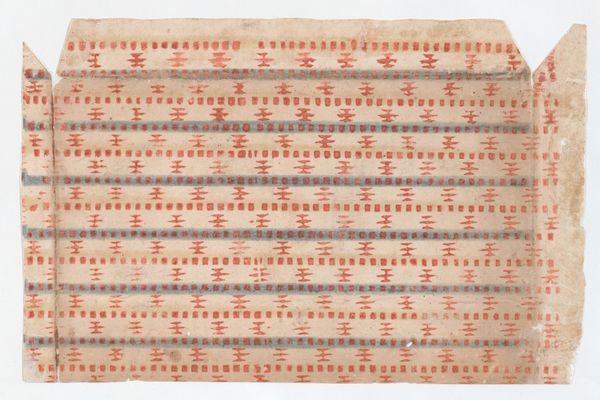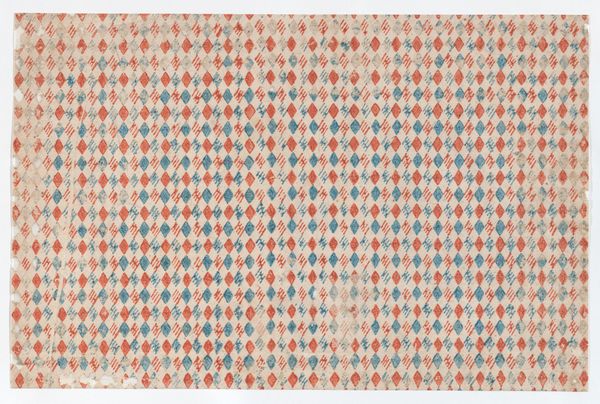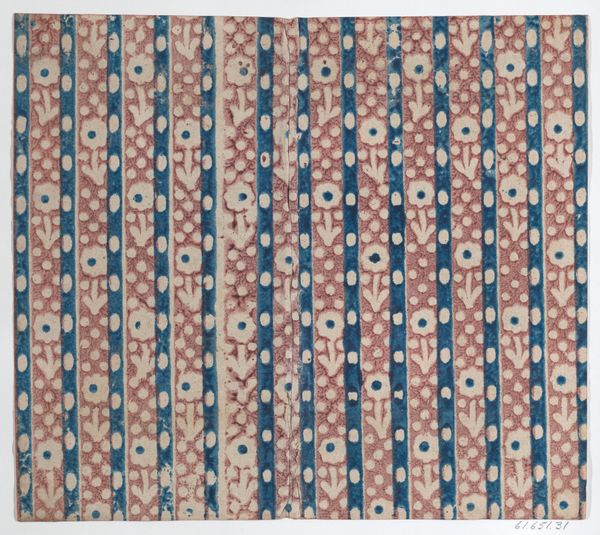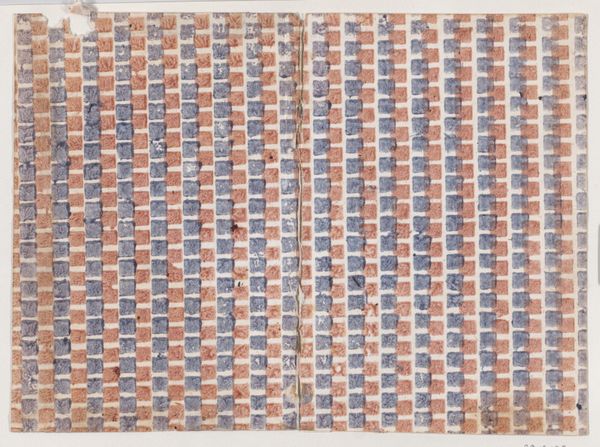
weaving, textile, cotton
#
pattern heavy
#
asian-art
#
weaving
#
textile
#
fashion and textile design
#
geometric pattern
#
repetition of pattern
#
regular pattern
#
pattern repetition
#
cotton
#
textile design
#
imprinted textile
#
layered pattern
#
combined pattern
Dimensions: 79 15/16 × 131 1/8 in. (203 × 333 cm) (approx.)
Copyright: Public Domain
This textile, called Kain lelohor, was likely made in Indonesia, and created using labor-intensive dying methods. The cloth is permeated with evenly spaced circles, formed through the meticulous application of dye resist. This may have involved wax or paste, carefully applied to shield parts of the fabric from absorbing color. The edges are lined with a bold border of triangles, drawing the eye to the edges of the cloth. These are a reminder of the artistry, skill, and sheer person-hours involved in the production. The overall effect is a striking contrast between the regularity of the repeating patterns and the irregularities inherent in the dying process. The human hand is evident in the subtle variations of color and texture, and the textile is far from the mechanized perfection one might expect to see from a machine-printed fabric. By attending to the material properties of the cloth, and the labor involved in its making, we can appreciate it beyond the Western idea of 'art' as individual expression. Instead, we might consider it as a testament to a complex ecosystem of materials, skills, and cultural practices.
Comments
No comments
Be the first to comment and join the conversation on the ultimate creative platform.
